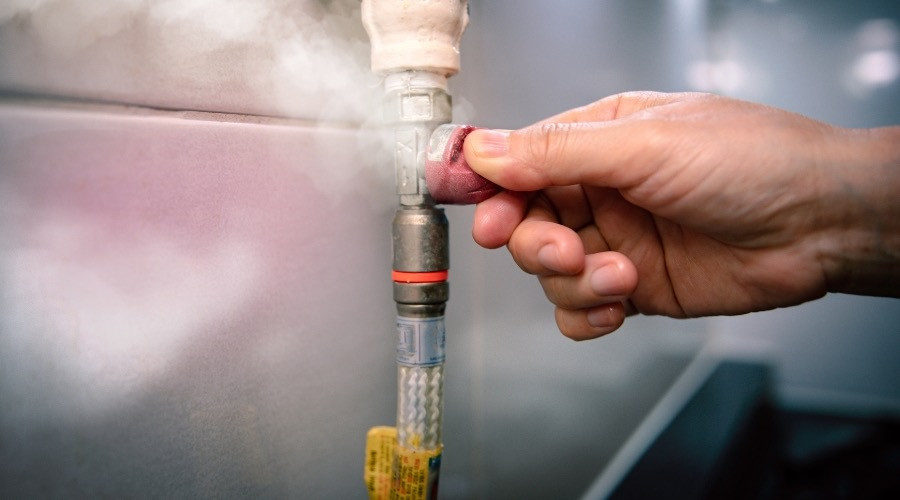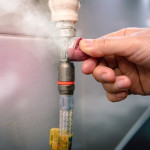How to Identify and Respond to Dangerous Gas Leaks
Staying safe from a gas leak requires quick identification and informed action. This guide is designed to alleviate concerns and enhance protection for both people and property by examining the dangers of a gas leak, explaining how to identify potential gas leaks, and outlining the response to a suspected gas leak.
Dangers of a Gas Leak
Exposure to natural gas creates serious and immediate risks to both health and structural safety. A gas leak may develop suddenly, leading to dangerous situations if not promptly addressed.
Breathing natural gas in enclosed areas displaces oxygen, which can cause dizziness, fatigue, nausea, and even unconsciousness within minutes—classic symptoms of a gas leak. These symptoms escalate quickly in poorly ventilated environments, particularly when a gas leak remains undetected.
Beyond health threats, the presence of accumulated natural gas within a home introduces a high risk of explosion. When gas concentrations reach 5–15%, even the smallest spark—from a light switch, pilot light, or static discharge—can ignite the gas and cause catastrophic damage. Leaked gas traveling through walls, basements, or ductwork creates multiple potential ignition points. This is what makes gas leaks especially dangerous: their silent spread and exponential growth of hazard over time.
Signs of a Gas Leak
 Recognizing the signs of a gas leak is critical. The most well-known indicator is the strong sulfur or rotten egg odor, which comes from mercaptan, a harmless chemical added by utility providers to make natural gas detectable. This scent alone should never be ignored.
Recognizing the signs of a gas leak is critical. The most well-known indicator is the strong sulfur or rotten egg odor, which comes from mercaptan, a harmless chemical added by utility providers to make natural gas detectable. This scent alone should never be ignored.
Auditory clues also serve as warnings. A persistent hissing or whistling sound near appliances, exposed piping, or outdoor meters may suggest gas escaping under pressure. Visual signs include bubbling in standing water near underground gas lines, discolored or dead vegetation above buried pipes, or dust blowing from holes in the ground. In some cases, a mist or white cloud near a gas line connection may appear—another critical signal of a gas leak in progress.
Unusual readings or sounds from a gas meter, along with physical symptoms like dizziness or headaches, further strengthen the case for immediate action. Multiple gas leak symptoms or visual signs occurring together indicate an urgent need to evacuate and seek help.
Responding to a Gas Leak
 When a gas leak is suspected, immediate evacuation is essential. Once the presence of gas is confirmed through odor, sound, or visible signs, it is vital to leave the building promptly. Electrical devices, open flames, and any potential ignition sources must be strictly avoided during evacuation. A single spark in a gas-rich environment can cause instant combustion.
When a gas leak is suspected, immediate evacuation is essential. Once the presence of gas is confirmed through odor, sound, or visible signs, it is vital to leave the building promptly. Electrical devices, open flames, and any potential ignition sources must be strictly avoided during evacuation. A single spark in a gas-rich environment can cause instant combustion.
After reaching a safe distance—typically 100 feet or more—contact the gas utility’s emergency hotline to initiate shutoff procedures. These teams are trained to handle natural gas emergencies quickly and efficiently. Following this, certified professionals should be brought in to inspect and address the problem. Licensed technicians can locate the source, perform essential gas leak repair, and restore safety through expert gas line repair services.
Avoiding the use of electronics during evacuation is critical due to the flammable nature of natural gas vapors. Flashlights, phones, and even static electricity from clothing can trigger explosions. Calm, steady evacuation procedures help minimize risk while awaiting emergency responders and repair specialists.
About Ira Hansen and Sons Plumbing
Ira Hansen and Sons Plumbing is a trusted family-owned and operated plumbing contractor serving the people of Reno and the surrounding areas. They pride themselves on offering top-notch solutions and honest, upfront service from industry experts. Call them today for gas line repair and installation in Reno, NV.






